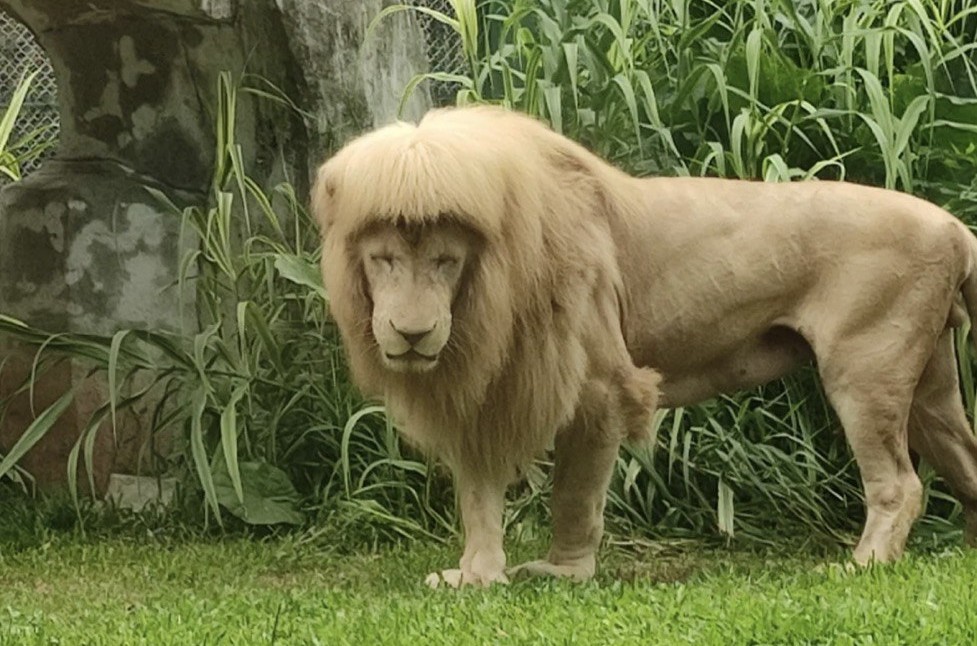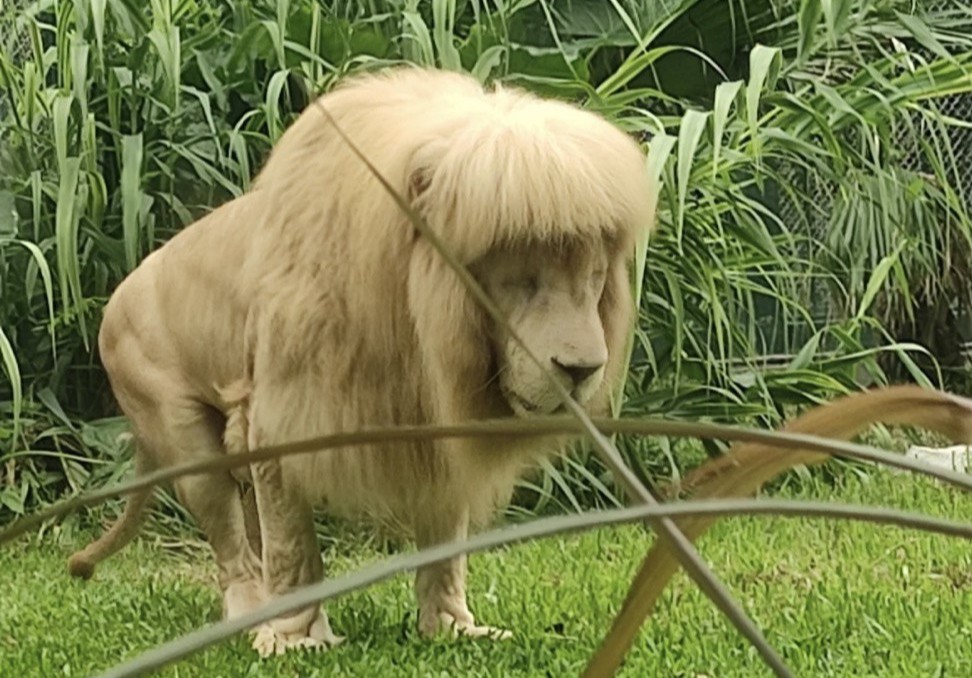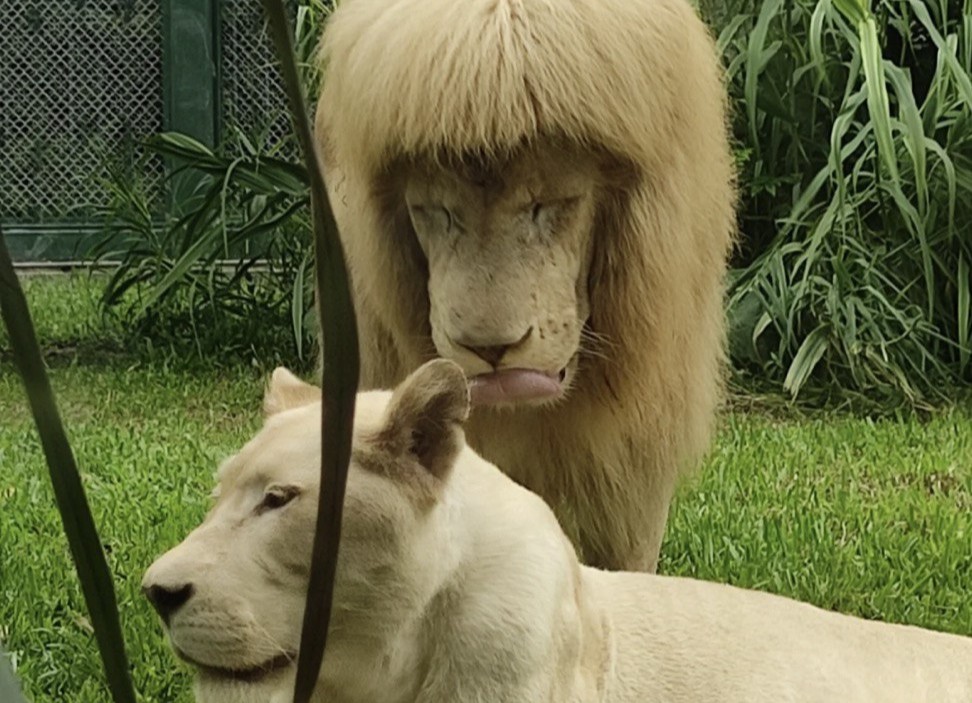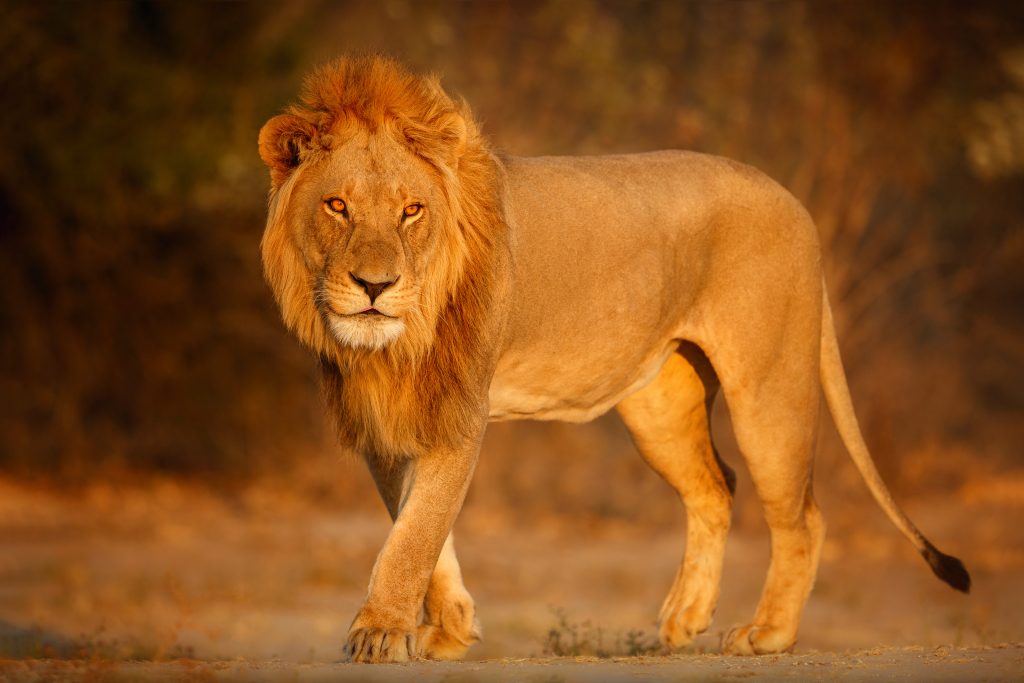Your cart is currently empty!
A Lion At A China Zoo Went Viral For Having Bangs. The Zookeepers Denied Giving It A Haircut.

It started with a photo—one lion, one mane, and one surprisingly well-defined fringe. Within hours, the image of A Hang, a white lion at Guangzhou Zoo in southern China, had gone viral. To some, the animal looked like it had wandered out of a retro fashion shoot; to others, it appeared to be the latest victim of misguided human interference. The question on everyone’s feed: Had zookeepers really given a lion a haircut?
The zoo denied any grooming, attributing the look to heat, humidity, and natural grooming habits. But the internet wasn’t so sure. The fringe became a meme, then a minor controversy, and finally a flashpoint for larger discussions about animal welfare, public trust in zoos, and how social media often blurs the line between humor and accusation.
The Mane Attraction

The phenomenon began quietly, as most viral moments do. In late May 2022, a visitor to the Guangzhou Zoo shared a few photos on Xiaohongshu, a Chinese social media platform. The subject was A Hang, but the focus was his bizarrely prim and proper mane. The images ignited a digital wildfire, spreading with incredible speed across China’s internet and then leaping effortlessly to global platforms like X (formerly Twitter) and Instagram. Soon, major media outlets from TMZ to The Independent were featuring the “lion with the bangs.”
What made the story so powerful was its universal, unspoken humor. The sight of a majestic predator sporting a style reminiscent of a human haircut was an immediate visual punchline that transcended language and culture.

The reaction was a cascade of shared delight, but it was also filtered through distinct cultural lenses. In the West, A Hang’s fringe was jokingly compared to the signature looks of Joe Exotic from Tiger King or the mop-tops of The Beatles. For many others, the reaction was more personal and deeply relatable.
“This reminds me of the bowl cut my mom gave me,” one user might write, while another from a different part of the world would share a similar memory. One commenter on a Chinese platform wryly noted, “Even lions aren’t safe from bowl cuts in Asia,” grounding the joke in a shared cultural experience. For a few weeks, A Hang was a furry, four-legged canvas onto which the world projected its own memories of bad hair days and salon mishaps, uniting millions in laughter.
The Unkindest Cut? A Public Theory Takes Hold

As A Hang’s fame grew, the lighthearted amusement soon gave way to a more pointed question: How did his hair get that way? For the vast majority of online observers, the answer seemed obvious. A compelling and surprisingly stubborn narrative quickly took hold: the zookeepers must have done it. The theory was that A Hang’s bangs were the result of a deliberate haircut, perhaps as a misguided grooming attempt or simply for the keepers’ own amusement.
This idea was bolstered by the visual evidence itself; the fringe appeared too clean and symmetrical to be a simple quirk of nature. The public imagination ran wild with the logistics. “One netizen questioned if the lion was very docile or if the zookeepers felt particularly gutsy for this alleged haircut to be done,” one report noted. Another commenter astutely observed that the neatness of the look suggested it would require a combination of “washing, cutting, and blowdrying.”
The theory gained even more traction as other zoo visitors shared their own anecdotal evidence. One user on Xiaohongshu claimed to have seen A Hang just a week before the photos went viral, stating he did not have a fringe at that time. Others remarked that his usual, more voluminous “Afro-hairstyle” had changed. In the court of public opinion, these “eyewitness” accounts solidified the belief that this was no accident, but an intentional act. The simple, easy-to-grasp story of a person giving a lion a haircut was far more powerful than any other possibility.
The Zoo’s Official Explanation

Faced with a growing storm of online accusations, the Guangzhou Zoo responded swiftly and consistently. In multiple interviews, zoo officials firmly denied the haircut theory. “We wouldn’t dare cut the lion’s hair,” a spokesperson repeatedly stated, emphasizing the inherent danger of such an act. They made it clear that “there is no hairdressing program at the zoo,” putting a definitive end to the speculation of a rogue stylist.
In place of the haircut theory, the zoo offered a counter-narrative they called “purely nature’s magic.” The primary cause, they explained, was the sweltering climate of Guangzhou. With temperatures soaring above 32°C (90°F), the exceptionally high humidity had caused A Hang’s thick mane to become heavy with moisture, making it droop down over his forehead. But the environment was only half the story. The final look, they suggested, was co-created by the lion himself. Caretakers reported observing A Hang engaging in his natural grooming routine: licking his paws and then using them to pat down his damp, unruly mane, likely in an effort to find some relief from the frizz. In a touch of fond humor, one staff member concluded, “You could say that he has ‘designed’ the hairstyle himself.”
The Science of a Lion’s ‘Style’: Keratin, Climate, and Honest Signals

While the zoo’s explanation of humidity and grooming might sound convenient, it is strongly supported by principles of biology and chemistry. A Hang’s viral hairdo wasn’t just a fluke; it was a predictable outcome of his environment and his own impressive health. At its core is the science of a “bad hair day,” which applies to animal fur just as it does to human hair.
Fur is composed primarily of a protein called keratin, whose structure is held in shape by hydrogen bonds. Humid air is heavy with water (H2O) molecules, which are easily absorbed by porous hair shafts. As the fur becomes saturated, new hydrogen bonds form between the water and the keratin, causing the fibers to swell, frizz, and—most importantly for A Hang—become significantly heavier. For a lion with a particularly dense mane, this added weight is enough to cause it to lose its natural volume and droop under its own weight.
Ironically, the “bad haircut” that brought A Hang so much attention was likely a direct result of his excellent physical condition. A lion’s mane is a classic example of an “honest signal” in the animal kingdom—a trait that demonstrates a male’s fitness to rivals and potential mates.
Research has shown that lionesses prefer males with darker, fuller manes, a feature correlated with high testosterone and good nutrition. However, this magnificent feature comes at a cost, as a large mane traps significant heat. Only the healthiest, most robust males can bear this burden. A sickly or malnourished lion would have a sparse mane that wouldn’t be substantial enough to droop so dramatically. Therefore, it was precisely because A Hang possessed a healthy, voluminous mane—the very symbol of his virility and the good care he receives—that it was so susceptible to being transformed by humidity into a comical spectacle.
What Viral Animals Reveal About Our Modern World
So, we know the science behind A Hang’s famous bangs. But the real question isn’t about humidity or keratin; it’s why we were all so completely charmed by it. The simple truth is, the magic ingredient wasn’t in the air in Guangzhou—it was in our own minds. We have this incredibly human habit of seeing ourselves in everything, and when we looked at that lion, we weren’t just seeing an animal. We were looking in a mirror and seeing every awkward school photo, every regrettable “I’ll cut it myself” moment, and every bad hair day we’ve ever had, all reflected in the majestic face of a predator.
This is the secret sauce for nearly every animal that becomes an internet sensation. A Hang instantly joined the hall of fame for viral critters, taking his place alongside legends like Grumpy Cat, not because of what they are, but because of who they remind us of. There’s a real joy in that connection, but it’s a double-edged sword. The tidal wave of online attention is wide but incredibly shallow. It’s great at creating a caricature—a funny, furry character—but it often struggles to convey the complex reality of the animal itself or the real-world conservation issues it might face.
In the end, the story of the lion with the bangs was never really about the lion. He was just living his life when he was swept up and turned into a global inside joke. His fame tells us very little about zoology, but it speaks volumes about our need to tell stories and see our own lives reflected in the world around us. So, it’s a good reminder to laugh at the memes, for sure, but to also spare a thought for the wild, complicated, and wonderful animal living its life on the other side of the screen.
